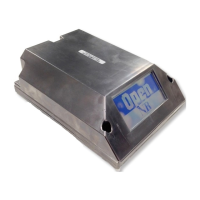What to do if the S&C TripSaver II USB transceiver is in the Error state?
- AAdam HarrisJul 25, 2025
If the USB transceiver for your S&C Industrial Electrical device is in an error state, you should reset the USB transceiver.







What to do if the S&C TripSaver II USB transceiver is in the Error state?
If the USB transceiver for your S&C Industrial Electrical device is in an error state, you should reset the USB transceiver.
How to fix low signal strength between TripSaver II and USB transceiver in S&C Industrial Electrical?
To address low signal strength between the TripSaver II recloser and the USB transceiver for your S&C Industrial Electrical device, reposition the powered TripSaver II recloser between 1 to 4 inches (25 to 102 mm) away from the USB transceiver. Ensure the recloser faces down with the trunnion pointing up and the LCD screen toward the USB.
| Number of Operations to Lockout | 4 |
|---|---|
| Operating Mechanism | Magnetic actuator |
| BIL | 110 kV, 150 kV |
| Control Type | Microprocessor-based |
| Reclosing Time | Adjustable |
| Operating Temperature Range | -40°C to +55°C |
| Weight | Approximately 45 kg (100 lbs) |
| Voltage Rating | 15.5 kV, 27 kV |
Information about qualified personnel for installation and operation.
Outlines critical safety warnings, precautions, and alert message meanings.
Explains the meaning of different safety alert messages (DANGER, WARNING, CAUTION, NOTICE).
Warns about potential hazards and necessary precautions during operation.
Guides on installing the TripSaver II Service Center Configuration Software.
Lists the necessary computer hardware and software for installation.
Details the process of installing the configuration software.
Instructions for connecting the USB transceiver and power module.
Details methods to find the unique TripSaver II recloser Transceiver ID.
Describes the main components of the software's user interface.
Explains the top navigation elements for software interaction.
Details the Standalone and Connected modes of operation.
Describes the offline mode of the software and its capabilities.
Explains the online mode for direct communication with the recloser.
Introduces the functions available in the software's menu bar.
Covers functions related to managing snapshot and setpoint files.
Guides on managing snapshot files for data preservation and analysis.
Instructions on loading and saving configuration setpoints.
Details how to establish and manage connections to the recloser.
Guides on establishing a connection with the TripSaver II recloser.
Covers functions for validating, applying, and reverting settings.
Describes how to check configuration settings against validation rules.
Details how to apply configured settings to the TripSaver II recloser.
Covers options for firmware updates, restoring profiles, and creating reports.
Provides instructions for updating the recloser's firmware.
Recovers lost profile data after a firmware update issue.
Allows selection and configuration of Time-Current Characteristic curves.
Configures sequential coordination between reclosers.
Details the process of setting up trip operations within TCC.
Configures curves for Non-Reclose (NR) operational modes.
Configures the display of information on the recloser's LCD screen.
Selects which screens appear in the recloser's display sequence.
Displays the current operational status of the recloser.
Explains the various status indicators like Current, Mode, etc.
Accesses historical counts and trip events data.
Shows details of interrupter trip events and their characteristics.
Interface for performing simulation-based functional tests.
Explains simulating temporary and permanent faults for testing.
Configures the Local Manual Open (LMO) feature.
Configures communication modes and radio functions.
Manages Non-Reclose (NR) and Remote Non-Reclose (R-NR) modes.
Provides tips to improve communication signal strength for reliable operation.
Addresses common problems during software connection to the recloser.
Guides on resolving connection timeouts and object errors.
Instructions for clearing the "Service Now" state from the LCD.
Recovers lost profile data after a firmware update issue.
Lists various inverse curve segments for different recloser controls.
Lists screens that can be displayed after a drop-open event.
Explains active TCC curves based on mode and conditions in R-NR.
Contains FCC and ISED compliance statements for the device.
